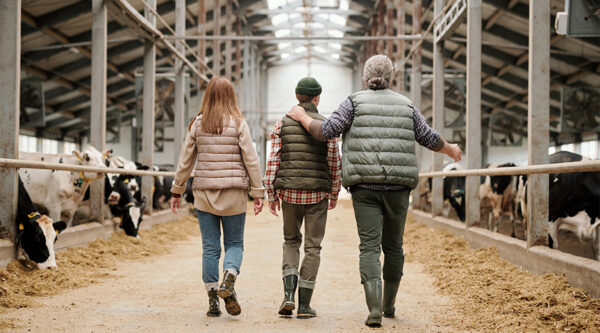

Many farms will include areas of woodland and there is often uncertainty as to whether or not the woodland is entitled to relief from inheritance tax. There are three types of inheritance tax relief potentially available for woodland depending on the area of the woodland relative to the rest of the farmland and the use to which the woodland is put.
For woodland to qualify for Agricultural Property Relief (APR) from inheritance tax it must either be:
1. Short rotation coppices, where a perennial crop of tree species are planted at high density and are harvested above ground level at time intervals of less than ten years. This would include the production of biomass fuel.
2. Woodland that is occupied with agricultural land and is ancillary to that farmland, such as shelter belts, game coverts, coppices used for fencing materials on the farm and amenity trees or spinney’s.
Woodlands that are used for amenity purposes such as shoots, or for the production of commercial timber, or are newly planted under a grant scheme to take land out of agricultural use specifying that it must not return to agricultural use within twenty to thirty years cannot qualify as agricultural property.
Business Property Relief (BPR) for inheritance tax is available where the woodland is either:
1. Commercial woodland where the deceased complies with the requirements for eligibility for BPR on death, or
2. Part of the farming business as a whole with the woodland being managed as a part of the farming business.
The potential advantage of BPR over APR is that if there is any hope value within the woodland, or the market value of the woods are increased due to shooting activities run within them, or wind turbines located in the woodland, then that higher market value would be relieved from tax, whereas if only APR were available it only relieves the lower agricultural value from tax. In all cases to claim BPR the income generated must be mainly trading income, rather than investment income, otherwise there is a risk that the Revenue would claim that BPR were not available as the woodland was held for investment purposes only.
The third relief available for woodlands is Deferral relief which, as is indicated by it’s name, merely defers the tax liability. This relief is based upon the fact that growing trees may take several generations to mature and would otherwise be taxed on each successive death. When neither APR or BPR are available it may be possible to elect to exclude the value of the trees or under wood, but not the value of the land itself, from the value upon which inheritance tax is chargeable. At the point the timber is felled or sold the proceeds are taxed as if they had formed part of the estate at 40%. Hence this third option should only generally be taken where APR and BPR are not available.










